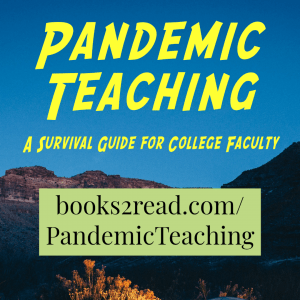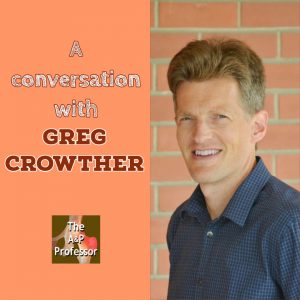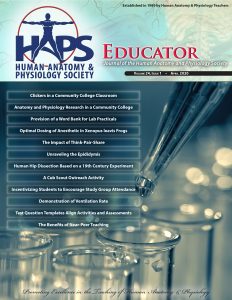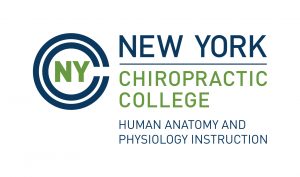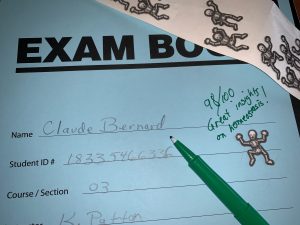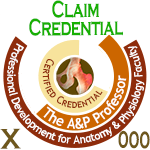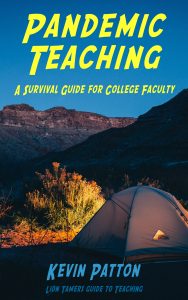Test Question Templates Help Students Learn
TAPP Radio Episode 70
Episode
Episode | Quick Take
Greg Crowther joins host Kevin Patton for a conversation about retrieval practice, online formative testing, and Test Question Templates (TQTs). We learn how TQTs can help students learn and can help teachers prepare effective exams.
- 00:44 | Pandemic Teaching Book (please share!)
- 01:57 | Sponsored by AAA
- 01:46 | Introducing Greg Crowther
- 03:57 | Test Question Templates (TQTs)
- 21:58 | Sponsored by HAPI
- 22:46 | Higher-Level Test Questions
- 49:37 | Sponsored by HAPS
- 50:16 | Staying Connected
Episode | Listen Now
Episode | Show Notes
When information overload occurs, pattern recognition is how to determine truth. (Marshall MacLuhan)
Pandemic Teaching
1 minute
- I need your help to spread the word!
- Can you please share the link below with THREE colleagues?
- It’s best if one of these is the person who coordinates faculty professional development at your school.
- AND can you share at least one post on social media? (or re-share one of our posts about the book at @theAPprofessor or @LionTamersGuide )
- Can you please share the link below with THREE colleagues?
- Pandemic Teaching: A Survival Guide for College Faculty
- by Kevin Patton
- books2read.com/PandemicTeaching
Sponsored by AAA
1 minute
A searchable transcript for this episode, as well as the captioned audiogram of this episode, are sponsored by the American Association for Anatomy (AAA) at anatomy.org.
Want some microscopic images to use in your course? Try the Virtual Microscopy Database (VMD)—free for AAA members and nonmembers alike! (just click the Resources tab)
Check out the recent issue of Anatomical Sciences Education (ASE) focusing on remote teaching .(click the News & Journals tab)
Don’t forget—HAPS members get a deep discount on AAA membership!
Introducing Greg Crowther
1 minute
Greg Crowther, Ph.D., is a faculty member at Everett Community College (near Seattle) and has training and experience in both human biology and teaching/learning. His publications on using content-rich songs for learning have been widely cited. Greg’s voice has been heard on previous episodes of this podcast.
- Greg’s STEM songs: https://faculty.washington.edu/crowther/Misc/Songs/
- Episodes featuring Greg’s music:
Test Question Templates (TQTs)
18 minutes
Greg Crowther begins by laying a foundation by chatting with Kevin Patton about content from recent episodes about retrieval practice. Greg then introduces his strategy involving Test Question Templates—or TQTs for short—which were recently described in a paper in the journal HAPS Educator.
- Testing in the Age of Active Learning: Test Question Templates Help to Align Activities and Assessments (Greg Crowther’s paper in HAPS Educator) my-ap.us/hapsEDApr20
- Recent episodes about retrieval practice
Sponsored by HAPI Online Graduate Program
1 minute
The Master of Science in Human Anatomy & Physiology Instruction—the MS-HAPI—is a graduate program for A&P teachers, especially for those who already have a graduate/professional degree. A combination of science courses (enough to qualify you to teach at the college level) and courses in contemporary instructional practice, this program helps you be your best in both on-campus and remote teaching. Kevin Patton is a faculty member in this program. Check it out!
Higher-Level Test Questions
27 minutes
The conversation continues with a deep dive into how Test Question Templates work—and how we and our students can use them in teaching and learning.
- Testing in the Age of Active Learning: Test Question Templates Help to Align Activities and Assessments (Greg Crowther’s paper in HAPS Educator) my-ap.us/hapsEDApr20
Sponsored by HAPS
1 minute
The Human Anatomy & Physiology Society (HAPS) is a sponsor of this podcast. You can help appreciate their support by clicking the link below and checking out the many resources and benefits found there. Watch for virtual town hall meetings and upcoming regional meetings!
Need help accessing resources locked behind a paywall?
Check out this advice from Episode 32 to get what you need!
Episode | Captioned Audiogram
Episode | Transcript
The A&P Professor podcast (TAPP radio) episodes are made for listening, not reading. This transcript is provided for your convenience, but hey, it’s just not possible to capture the emphasis and dramatic delivery of the audio version. Or the cool theme music. Or laughs and snorts. And because it’s generated by a combo of machine and human transcription, it may not be exactly right. So I strongly recommend listening by clicking the audio player provided.
 This searchable transcript is supported by the
This searchable transcript is supported by the
American Association for Anatomy.
I'm a member—maybe you should be one, too!
Introduction
Kevin Patton:
The philosopher Marshall McLuhan once said, when information overload occurs, pattern recognition is how to determine truth.
Aileen:
Welcome to the A&P Professor, a few minutes to focus on teaching Human Anatomy & Physiology with a veteran educator and teaching mentor, your host, Kevin Patton.
Kevin Patton:
In this episode, I have a conversation with Greg Crowther about Test Question Templates.
Pandemic Teaching Book (please share!)
Kevin Patton:
Hey, remember that free ebook I’ve been talking about? It’s a short little book called Pandemic Teaching: A Survival Guide for College Faculty. It’s a light conversational read that’s full of ideas and tips and mindsets that help us work out the kinks in our remote teaching and be successful at it. It’s a free download from all the major ebook stores. Just share the link I’m about to give you to see a list of different places to find it, like Amazon, Barnes and Noble, Apple Books and so on. Its books2read.com/PandemicTeaching. It’s books, the number two, read.com/capital P Pandemic, capital T teaching. You can find that link in the show notes and episode page.
Kevin Patton:
Oh, yeah, could you also take a moment to mention it to your teaching colleagues in any discipline, and also mention it in social media too. I sure do appreciate your help with this.
Sponsored by AAA
Kevin Patton:
A searchable transcript and a captioned audiogram of this episode are funded by AAA, the American Association for Anatomy. Hey, remember that virtual microscopy database that I told you about a while back? Have you had a chance to check it out? Yeah, I didn’t think so. Here’s a gentle reminder to go to anatomy.org and find it under the Resources tab. Something else you may want to check out while you’re there is the new addition of the journal, Anatomical Sciences Education, or ASE for short, which is all about teaching anatomy remotely. Once again, get there by going to anatomy.org.
Introducing Greg Crowther
Kevin Patton:
This episode is a conversation I had recently with Greg Crowther, whose music has been on this podcast in past episodes. You’ve heard his voice before. Before we jump in into our conversation, I wanted to give you just a bit of background on Greg, in case you don’t already know him. He has a BA in biology from Williams College, an MA in science education from Western Governors University, and a PhD in physiology and biophysics from the University of Washington.
Kevin Patton:
Clearly, he has a background in training in both the science and in teaching practice and learning principles. He teaches anatomy and physiology in the Department of Life Sciences at Everett Community College, which is just north of Seattle. His peer reviewed journal articles on enhancing learning with content rich music have collectively been cited over 150 times. But there’s so much more to Greg than that, as you’re about to find out.
Test Question Templates (TQTs)
Kevin Patton:
Well, I’m here with Greg Crowther and Greg, I’m really glad you could join me I know you’re in between teaching tasks and Zoom meetings and things like that. Welcome to the podcast.
Greg Crowther:
My pleasure, Kevin.
Kevin Patton:
Greg and I were chatting just very briefly about the idea of retrieval practice, which we both see as a really good tool for learning, a really good technique or strategy for learning. Was listening to the podcast in a previous recent episode, where I recapped some of the main things that I do, and have done with retrieval practice with my own students. Greg, you said that there were certain things that stuck out to you in that. Let’s start there with some of the things about what I’ve been sharing about what I do with Retrieval Practice in relation to your experience.
Greg Crowther:
Yeah, great. As you know, Kevin, but your listeners do not, I was listening to this in the context of a new paper that I’ve written that in some ways is very, very compatible and similar to Retrieval Practice and what it’s proposing. In other ways, different. I thought we could start by recapping the aspects of Retrieval Practices as I understand it, that seem to relate.
Greg Crowther:
In Episode 67, I heard you say a few things, first, and I think maybe least controversially, you were just advocating for formative assessment prior to summative assessment. So low stakes, relatively low pressure. I think probably most of us all agree that that is very helpful, right? Anything to add to that concise description?
Kevin Patton:
No, that’s definitely it. I ended up mushing them together in a course I teach now, but it’s not regular A&P, I teach a pre A&P course completely online, and self-paced. I do have a final exam that in some ways is summative, but all of my online testing is take as many attempts as you want, and it’s open book, open anything you want. As long as you get 85% or better, then you passed and you can move on to the next one. Until you get to the final and then if you pass that then you’ve passed the course, and it is a pass fail course.
Kevin Patton:
I ended up mushing them together, at least in that course. Now, that’s not the way I do my online tests on A&P, which I’m not doing right now, but have done recently. There, my online tests are to prepare for the midterm and the final, which I would consider my summative tests.
Greg Crowther:
Okay, good. What you’re saying is that regardless of the course, you’re trying to get away from these single shot, gigantic stakes summative assessments-
Kevin Patton:
Exactly.
Greg Crowther:
…either because the formative assessment is folded in there, or there’s a lot of that that proceeds summative assessment.
Kevin Patton:
Right.
Greg Crowther:
Okay, cool. Then the next point that I got, that I think is a little more subtle that you made is our students could really benefit from lots and lots of practice, probably more than we’ve necessarily planned for explicitly. I think that was also a really good point that we know this stuff really well, we just review it quickly before a lecture, but they may need to go over it for hours and hours. I assume you agree with that, anything to add there?
Kevin Patton:
Absolutely, that’s the big thing in my book is that… I think a lot of us in our heads, we think that the students are doing that practice on their own in some way, but you and I both know, having taught a variety of students, most students, whether they’re the good students, the students with challenges, doesn’t matter, they’re not practicing enough. You’re right. I think we need to provide opportunities for them to practice and really encourage and stimulate that practice. Yeah, I agree with what you’re hearing there. Yeah.
Greg Crowther:
Right, and then building on that, the next point I got was you were saying, well, let’s make sure we have, if at all possible, we have a variety of practice items so that if they’re doing a practice test or practice quiz, that they aren’t seeing exactly the same questions each time, which I think makes sense for a couple of reasons. One is just boring to do the same thing multiple times. Also, it leads to students just zeroing in on these exact answers to these exact questions without necessarily going beyond those. Once again, please amplify your comment as needed.
Kevin Patton:
No, nothing to amplify there, I completely agree. Partially, I guess the reason why I thought about doing it that way, is I was getting a lot of pushback from my colleagues when I was workshopping this idea, and bouncing this idea off of my colleagues and they were all saying, well, what’s to prevent them from just memorizing it, or just making a copy of it and just passing it along to the next group of students and so on? That’s a legitimate concern. But the other thing is, is I was more concerned about them walking out of my course really knowing the principles and the core ideas. They’re not going to know that if they’ve just memorized the question that they know the answer is A, or the answer is carbaminohemoglobin.
Kevin Patton:
If they don’t understand the role of carbaminohemoglobin in the body, and in various processes in which it’s involved, then what good has taking A7P done for them? They’re not gonna be able to use that for anything. I think you heard right on that one as well.
Greg Crowther:
Great, and that really connects well to my Test Question Template approach that I’m going to be telling you about more, this concern that this idea that we need to do whatever we can to push students into getting the broader concepts, rather than just memorizing all these isolated facts. But then the final, more just straight retrieval practice item that I heard, and that delighted me to hear you say this was you said somewhat briefly that you recommended writing your own test items, if possible, rather than just taking the publisher test bank. Could you maybe say a little more about why you think that is valuable?
Kevin Patton:
Well, I think there’s a couple of things built in there. One is, I think publisher test banks are useful when you’ve been thrown a class that you’ve never taught before, or you’re overwhelmed with some other project or something like that, and your time is limited, and you have to get a test out. Go ahead, pull out the test bank, look through it, see what kind of items that are already in there that have already been written, that can help you and you put together a reasonable test.
Kevin Patton:
Another use of it is to look through it to see, well, what kinds of questions are the authors of this test bank asking? That might stimulate some ideas for me. Like, “Oh, I’ve never thought about asking that style of question. I’ve never thought about asking questions about that concept in this way, so I’ll adapt that.” That gave me a good idea, I’ll adapt that.
Kevin Patton:
That’s all very good, but one issue with the publisher test banks, is that the authors don’t have your students in mind. They’re probably putting these questions together very quickly and in a massive amount, and that’s a different scenario than when you’re sitting down thinking of your course, and your students and your particular goals for your students and what issues they have, where the pain points are for them? What concepts are they grappling with and having difficulty with?
Kevin Patton:
Yeah, okay, sometimes it’s not possible to sit down and write your own test entirely, you have to borrow test items from somewhere else. There are multiple values in doing it yourself, and that is that you can adapt to your own students and your own learning outcomes, the kinds of things you want your students to walk out of your course with.
Greg Crowther:
I had all this in mind as these themes that seemed relevant to this paper. If I may, I’d like to segue into telling your listeners just a little bit about the paper, and we can maybe do a bit of a compare and contrast relative to retrieval practice as we’ve been describing it. Does that sound okay?
Kevin Patton:
Yeah, sure. That’s great.
Greg Crowther:
Okay. I’m sure Kevin will post a link or something, but this is a paper that just came out in the spring issue of HAPs Educator, the catchphrase is Test Question Templates. It’s part of the title. What I mean by a Test Question Template is a template literally for writing practice questions and writing test questions. It can be used by you, the instructor, but also by your students to generate their own versions of these questions. As I say in the paper, I think a good TQT would have four parts; an input, an output, an example and a key.
Greg Crowther:
The input is, what information does the student get in the question, the output is what are they supposed to do with the information? What kind of answer are they supposed to write for you? An example would be a specific example of this template, an actual test question or a simulated test question and then a key would be, what would be a good answer to that question and maybe what would be an okay answer?
Greg Crowther:
If you want it to be really thorough, you could say, this kind of an answer would have these limitations, et cetera, et cetera. That was all vague. Let me give you an example. If you’re interested in teaching spinal plexuses, and spinal cord injuries, you could set up a Test Question Template, something like, if I give you the level of a spinal cord transection, that is a serious traumatic spinal cord injury, you the students should tell me, will this person likely to be paraplegic or quadriplegic or something in between, some intermediate state? Okay,
Kevin Patton:
Okay.
Greg Crowther:
I think the appeal of this kind of approach is it’s relatively straight forward, it signals to the student what they really need to know. For this kind of a question, you’re going to need to know about the spinal plexuses, specifically the ones that control the limbs, the brachial plexus, the lumbar plexus and the sacral plexus. So, which ones control which limbs. You’ll also need to know about how the brain is communicating with the limbs through the spinal cord, that flow of information up and down.
Greg Crowther:
To me, this is not just straight recall, this is putting together a couple of different pieces, and making sure the students can do that. You can generate a million versions of this question, what if the injury is at T2, what if it’s at C6, what if it’s at C3? It lends itself to lots of practice the students can generate. Kevin, let me… That was a lot, let me pause and say, does that make sense to you? Do you have any initial questions about what I just said?
Kevin Patton:
Well, makes sense to me because I’ve read your paper. I already knew what you were going to say. But I think that… Well, I guess, a question and maybe you planned to get to this a little further along in the conversation. If you could recap the template itself, the elements of the template itself, just very briefly, and then maybe if we could, at some point, at least talk about are you giving this to the students and they working it out? Are you using it yourself when you’re planning a test? Are you doing both, and so on?
Kevin Patton:
Just again, a brief recap of the elements of the TQT, that template.
Greg Crowther:
Sure. The recap, I mentioned they’re these, what I think of as the four elements; the input, the output, the example and the key. Now that I’ve introduced this spinal cord injury idea, let’s say for that one, what would these elements be? The input would be, I’m telling the students there’s a patient who has a spinal injury at spinal level T6, let’s say. That’s the input. The output is, you the student need to tell me whether that patient will be paraplegic, quadriplegic or something else, something in between, okay?
Greg Crowther:
This could be in the form of a short answer question. Usually I prefer to do these as short answer questions and make the students explain their reasoning to me, but you could also write multiple choice questions if you need to do all multiple choice tests. Your choices could be A, paraplegic, B, quadriplegic, C partial loss of upper limb function, total loss of lower limb… Whatever, you could write choices based on that and skip the reasoning part.
Greg Crowther:
Then the example would be, let’s say for the T6 example, Sven has an injury at T6, what loss of limb function will they have? You would say, “Well, T6 is right in between the brachial and lumbar plexuses, so Sven would be paraplegic. Loss of lower limb function, upper limbs are okay, based on the information we have.” Then you could, if you wanted to be again really thorough, you could elaborate on what if the student writes paraplegic, but they claim that the upper limb function was lost rather than the lower limb function? Would you give them partial credit? You could consider those scenarios.
Greg Crowther:
I think that addresses the first part of your question, and then the second part was, am I giving these to students, am I using them myself? The answer is all of the above. I’m a, for better or worse, I’m a PowerPoint slide guy. I lecture via PowerPoint. The second or third slide of each set is, here are the Test Question Templates for this chapter.
Greg Crowther:
I say, when I’m writing my short answer questions, I’m going to rely heavily on these, so you should look at them as well. They have access from the beginning. Then when I sit down to write the actual tests, I do, that’s the first place I go, is generally I’ll pick a couple of those. That gets us into transparency and equity in a way of I want it to be really clear to the students what they should study, and what the test is going to look like.
Greg Crowther:
To me, this is a good way of doing it, especially for maybe more cognitively challenging questions. If your course is all about… Well, all of our courses have this, name various muscles of the body. They know that’s coming, they know how to study it, it’s less obvious to most students how to prepare for these higher level Bloom’s questions. I think it’s not enough to ask them some practice questions that are analytical and then ask some test questions that are analytical in a different way. It’s still not as clear to them how to study for that.
Greg Crowther:
With these templates, I’m really trying to prepare them for these higher level questions in a way that gives it away but doesn’t give too much away.
Kevin Patton:
We’re going to take a short break and be right back.
Sponsored by HAPI
Kevin Patton:
The free distribution of this podcast is sponsored by the Master of Science and Human Anatomy & Physiology Instruction, the HAPI degree. In the era of pandemic teaching, and continuing forward, teachers of A&P need high level skills in teaching practice, and a deep reservoir of strategies. The HAPI program can provide that. Check out this online graduate program at nycc.edu/hapi, that’s H-A-P-I, or click the link in the show notes or episode page. There’s a new cohort forming right now. So, now’s the time to get on board.
Higher-Level Test Questions
Greg Crowther:
With these templates, I’m really trying to prepare them for these higher level questions in a way that gives it away but doesn’t give too much away.
Kevin Patton:
Yeah, well, I tell you, isn’t that something we hear a lot from students, not only in our area of teaching, but across all students and all levels is, well, I knew the stuff but the teacher didn’t ask me any questions about what he talked about in class. I’m like, really? But the reason is, I think, that a lot of times we do on our test, we’ll ask these higher level test questions. That’s not something you can just look up. You can look up the information that you need to be able to answer it, but it’s not going to guide you necessarily in the direction that you need to go in on the surface to take you exactly step by step where you need to end up. You need to do that, you need to be able to put that together.
Kevin Patton:
Yes, students think of that as a trick question, or a question that has nothing to do with what was talked about in class. But what you’re doing with this template is you’re showing them how you’re going to put together these higher level questions and walking them through the process of how that works, giving them concrete examples, that… The benefit that you or I would have in using this template as instructors is, we know the kind of questions we’re going to be asking the students. We can preview that as we even reveal these templates as practice, we can emphasize certain aspects of it and say, if I ask you a question like this, how would you go about answering it, and so on.
Kevin Patton:
That’s what the template is doing, in my mind. I haven’t used it. I think it’s really cool. I wish I would have learned about this 30 years ago, but I see this as a great tool for revealing to the students exactly… Not exactly, but almost exactly what’s going to be on the test, how they’re going to be tested, so they’re not surprised by the manner in which they’re tested or even the content, they just don’t know what the exact question is going to be.
Kevin Patton:
Like clinical… I would imagine I’ve not had any clinical training myself, but I’ve been there alongside people. My wife is a nurse, my son and his wife are physicians. When they were going through their clinical training and so on, well, they had all this knowledge, and they knew the kinds of questions they needed to ask and the kinds of tests that needed to be done and all that, but it’s not until you walk in with that patient, that the rubber hits the road, and you now have to find a solution.
Kevin Patton:
That’s what this does, I think it’s like mini medical school, is it sets you up for dealing with that patient. Only this time, it’s not a patient, it’s a test item, it’s an exam item. Now, they have some experience in dealing with similar scenarios. They’ve walked through this theoretically and so on and been able to practice on their own and now they’re walking in to see if they can put it together with a new variation, what they’ve already learned.
Greg Crowther:
Right. In fact, some of my favorite TQTs are set up as clinical scenarios. For example, if you’re teaching about the integumentary system, you can imagine a patient who maybe they have dark skin, maybe they have light skin, maybe they’re out in the sun a lot, or maybe they’re not, maybe they’re trying to get pregnant, and that’s concerned about folate levels, maybe they’re not. Maybe they eat a lot of vitamin D in their diet, or maybe they don’t.
Greg Crowther:
You can vary all of those things in your scenario, and then figure out, is the patient, should they be more concerned about skin cancer, about vitamin D production and so on and so forth? I think that’s fun and interesting for the students. However, one of my cautionary notes in this paper as you might have noticed is if I’m teaching sophomores, there are a lot of things that they don’t know and I don’t know clinically. I think it works well for that kind of skin nutrition scenario. But, if we’ve just done EKGs for like 20 minutes, me giving them an EKG and then asking them to diagnose the patient, they probably aren’t ready for that. A lot of clinical things actually don’t lend themselves to TQTs, they try and keep an eye out for the ones that do.
Kevin Patton:
I think you’re right on that. I’ve seen… We talked about test banks and so on, and I’ve seen sample case studies and many case studies that do that. That’s a very good point about the care we need to take and what exactly we’re asking our students.
Greg Crowther:
Yeah, very much. I’ve encountered that as well with these textbook questions that I think there’s a bit of naivete like students like case studies, they’re headed for clinical careers, so let’s give them some clinical examples. All of that is fine and good, but not if, they suddenly need to have med student level understanding of things. Let’s just be really clear about what we expect them to know.
Kevin Patton:
Preparing them for clinical applications is one thing. But assuming they already know those clinical applications is another. That’s something that I sometimes have to pull myself back from is I have to keep telling myself, this is the beginning of their studies. There’s no way they can learn at all just in my course. What is it that they need to walk out of my course with so that when they get to those clinical applications, they’re going to get a review of a A&P in all those courses. I don’t know of a clinical course that doesn’t do at least a little bit, maybe not in the class, but in the textbooks. Nursing textbooks, OT, PT, all of them, they review the anatomy and physiology, sometimes at the beginning of their textbook or sometimes at the beginning of each chapter of the textbook, and go on.
Kevin Patton:
They are going to forget some things, but they’re going to have opportunities to relearn it. If they’ve built a foundation in our course, that relearning is going to be easier for them when they get there. I’ve gone off on a whole different tangent here, but I think your point is well taken when you’re doing these TQTs, that we do have to be careful about how far we go with the applications in that. But I also agree with something you just said, and that is that, I think working out puzzles is fun for a lot of people. That can be a very engaging way to test them, and make the test a little bit more enjoyable than most people think tests ought to be.
Greg Crowther:
I’m going to build a tangent on your tangent, if I may. Mostly I think of the TQTs as student facing and students serving. Here’s what the test could be like, here are some ways to practice. But I also, as we were just talking about, what is it reasonable for our students to do at this point in their education? One can also use the TQT as an instructor, as a check on, am I asking them things that are reasonable?
Greg Crowther:
It may be a useful exercise for some of us to, if we want to ask a question about muscular dystrophy or whatever, some clinical thing that we’ve sort of touched on, try putting it into the TQT format, and say, “This is what I’m going to give the students and this is what they should give back to me.” And test it out on yourself. Is this fair? If I give them this, can they really give me that back? I think it may be useful as a self-reflective thing as well.
Kevin Patton:
Yeah. Well, something that struck me is I… One of many things that struck me as I read through this paper is in relationship to what I was talking in that recent episode about the way I do my online tests and formative tests and practicing and practicing, is I mentioned how my method requires a large number of test items, because the rotating through in these randomize sets. I would 20 minutes every day, when I came home from school, I’d sit down for 20 minutes and work on some items and so on.
Kevin Patton:
I did what a lot of people call backwards design, and I knew what my outcomes were. I did start with that, and I had that in mind as I did this. I mentioned in that episode that as I wrote questions, then other questions, other variations would occur to me. I might be asking about an injury at… Using your earlier example, using an injury at this level of the spinal cord, well, now I can make one that’s at this other level of the spinal cord, same kind of question. But of course, the outcome is going to be different, the answer is going to be different. But it’s still testing the same set of concepts that that student has.
Kevin Patton:
I was thinking, if I had this all those years ago, when I first started building this, this would have been a great thing for me to start with, so I didn’t have to sit there and do it in my head and do it on the fly, and maybe not be as careful with it as the TQT would allow me to be, because if I have those there, or at least have that method of how to do that, then that would have worked out really great for me.
Greg Crowther:
You’re relating the TQTs back to the retrieval practice. Let’s do a bit more of that. We said earlier that retrieval practice is about giving the students formative assessments, giving them lots of chances to practice. You can see how that is working here. TQT’s are very much about enabling repeated practice with lots of varieties of questions that are getting at the same core concepts.
Greg Crowther:
In some ways, we’re speaking the same language, or even using the same words in the same language, not quite sure about this analogy, but the place where I see TQTs as diverging a bit from what I’m hearing as retrieval practices, the name retrieval practice, at least implies that the answers are all tucked away in your brain somewhere and it’s mostly just a matter of retrieving them. That’s maybe not exactly how you mean the phrase, but to me, that sounds more or less like fact recall, more than analytical thinking or critical thinking.
Greg Crowther:
With the TQTs, I’m trying to push more into that realm of how do we teach these more analytical problems where the answer can’t simply be retrieved, because there are so many variations on the question, you can’t pre-memorize them all, but you need to figure it out on the fly. It’s really my attempt to say, how do we do retrieval practice where the answer isn’t there waiting to be retrieved, I would say? What do you of that?
Kevin Patton:
Just to react to that, yeah, I agree with what you’re saying completely, Greg. I think that that just projecting my own thoughts and feelings to everyone, which I guess a lot of us do, is I think a lot of us do struggle with that idea of, how do we… Certainly there’s going to be straight retrieval practice in an A&P course, because you have to memorize the bones of the skeleton and certain features of the bones of the skeleton and so on, and the muscles and all that stuff. Yeah, there is that straight retrieval that we have to do. I think at least when we’re beginning to teach, but at least for me, who’ve been doing this for decades, I still struggle at various levels with, but how do I get them to that higher level of thinking? How do I get them to be able to solve problems with the stuff they’ve memorized, or maybe haven’t memorized yet? How can they deal with the solution if they don’t know a certain element? How can they get to that answer?
Kevin Patton:
I agree with that. I think that I’m probably using retrieval practice a little bit differently than some other people do. To explain that when I think of retrieval practice, the obvious kind of retrieval practice is, which bone is this? This is the femur. But, I also see the case studies and application questions and so on as a form of retrieval practice. Maybe an analogy, one that I use a lot, or what I do is the analogy of a soccer game and playing soccer.
Kevin Patton:
You’re going to learn how to dribble, you’re going to learn how to kick at the goal, you’re going to learn how to pass to another member, there’s all kinds of little elements that you’re going to learn. You’re going to practice that over and over, because as you continue to practice, you’re going to practice that in different combinations, you’re going to practice it on different terrains or turf, and then you’re going to do practice games. You’re going to split the team up into two and you’re going to play against one another. Now, it’s a whole different… Literally, a whole different ballgame because now, you’re having to apply it in certain situations. When is it appropriate to pass? When is it appropriate to dribble? When do you kick on the goal? At all these different angles, what if there’s someone in the way? What are you going to do about that?
Kevin Patton:
Now, you’re getting to a higher level of doing soccer. What you’re doing is you’re practicing in preparation for the game, maybe the big game, where you’re going to win a championship or not. Now, the more practicing you’ve done under the more various conditions, the more likely it is that you’re going to be able to win the game. The same thing with that summative test at the end, the more you’ve been able to practice, the better.
Kevin Patton:
Some of it is that basic, here’s how you dribble, here’s how you pass, here’s how you kick straight on or whatever, but there’s also those opportunities to do that higher level stuff. What I’m doing on my online test, I’m not only asking those straight knowledge questions or comprehension questions, I am going up to those higher levels.
Kevin Patton:
Now, a way I do that, that I haven’t really mentioned in my podcasts, I don’t think, is that I have used clickers, at least in my face to face courses. What I’ll do there, is I have a clicker question where I might ask, if there was an injury at this level of the spinal cord, what’s going to happen? Maybe there’s four or five different outcomes, possible outcomes, so they click on the right one. Then what I do is I reveal the poll, the answers. How many answered A, how many answer B? Because I know I’m going to ask that kind of question on the test, so this is practice for them. But it’s retrieval practice in the sense that they’re retrieving what they’ve memorized about the spinal cord, about the spinal segments, about where each nerve plexus is and what it does, about all those things you listed in your example.
Kevin Patton:
They’re retrieving that part of it, and now, they’re applying it. That opportunity, almost always reveals that either the majority of students or at least a significant number of students didn’t get it right. Partly because I asked the question too soon, they haven’t had time to really digest it and so on. But I asked that question. I said, “Well, okay, those of you that got this answer, how did you arrive at that answer? What’s your thought process for doing that? Those that answered this other question, what’s your thought process?” We start to work through it. I model for them, but including their input, model for them how you would go about solving that.
Kevin Patton:
Now, they’ve had practice of doing that. For me, that’s retrieval practice. Then having solved it that that way, it’s like solving a math problem. You solve enough quadratic equations, any quadratic equation you see you’re going to be able to solve if you’ve practiced enough with different scenarios. That’s the way I’m looking at retrieval practice is it’s still preparing them for the higher level test items, but in a much different way than you’re doing with your TQTs.
Kevin Patton:
What I’m thinking as I’m reading your paper, which I read a couple of times, not that it’s hard to read, or understand, but there was just so much in there-
Greg Crowther:
Struggled for hours to make it to table three.
Kevin Patton:
It took me forever just to get through the abstract. But no, there were several different angles you attacked it at, which is great. Something we didn’t mention, which maybe we’ll talk about in a second is there’s also an appendix there where you have a bazillion examples. If you didn’t quite follow the example in this discussion here, go get the paper and get the appendix and look through that appendix because it really helps clarify what Greg is talking about here in terms of the TQT, by giving you multiple examples across all the major systems of the body.
Kevin Patton:
But as I read through and so on, I kept thinking, I can take this TQT and combine it with what I’m doing. This is a good tool for me to use to enhance what I’m already doing. Instead of doing the clicker questions the way I do them, we could do the TQT thing and work through it that way instead. Then when I get to writing my test items, I can use the TQT approach there again, and use that as a model for writing my test items. That would not only make it easier for me, I think they’re going to be better test items, because I’m thinking about them in a more… I don’t know if I want to use the word formal way, but a more patterned way, so that I’m sure that I’m hitting what it is that I want to hit in a consistent way writing test items.
Greg Crowther:
I wouldn’t think of the clickers or TQTs as an either or. I think as you say, you can incorporate the TQTs, and then use the clickers to give them specific examples. You give them the spinal cord TQT and then you say ideally after they’ve had a little time to process that, then you give them a clicker. Here’s one example of this TQT in action, how is it going for you? You discuss it, it sounds like the discussion you do with them is very valuable. Maybe they flail on it. Then you give them another example, spinning off of that same TQT.
Greg Crowther:
I think that’s how I use clickers in my own classes is I try and give them specific examples of the TQTs, hoping that they will generate additional examples on their own outside of class.
Kevin Patton:
Sure.
Greg Crowther:
But maybe I can comment on the appendix versus the main texts, if I may. The main text is, I would hope, reasonably concise. It gives you some examples. It lays out the framework. Then the appendix is 77 pages of my attempts at specific TQTs. Now, I want to be clear that this appendix is not meant as the be all and end all, it’s very long, but some of them are better than others, and probably there are many other options out there that I haven’t even thought of for my sophomore level students.
Greg Crowther:
I would welcome you know anyone who says, “Hey, I like this kind of framework, and I have some more ideas for other TQTs. I’d love to hear about those.” Or, “You know what, Greg this TQT seems bad because blah, blah, blah, blah, I’d be happy to take that feedback as well.” Definitely, use the appendix if it’s useful, but don’t think of it as some sort of biblical tablet that I’m handing down or anything, it’s a work in progress.
Kevin Patton:
I haven’t read every one of those in your appendix because it is a long appendix, but the value in having so many is that you can see different angles to choose from. I can see this really developing into a widely used tool. That’s why I wanted to talk to you about it on the podcast because, the more people that we get this out to. It’s already in HAPs Educator and as I mentioned earlier, I have a link in the show notes in the episode page, so you can get directly to it. Through that you can contact Greg, as he invited you to with additional ideas or any glitches that you’ve noticed or anything like that in his examples.
Kevin Patton:
Greg, I don’t know if you have plans for it, but I hope that you’re going to continue working on this and maybe even publish some follow up papers or other kinds of things that are going to help those of us who have not thought it through as carefully as you have. Learn how to use it and some best practices in using it and so on because I think this is a really great tool, it’s a really great approach. It certainly has shaken up my brain a little bit and made me look at things differently than I had before.
Kevin Patton:
I think that’s the value of what we see in the HAPS Educator and the value of what we see when we interact with our colleagues and talk to them about the way they’re doing things. As yeah, we’re all teaching pretty much the same topics and pretty similar outcomes that we’re aiming for her. But the way we’re getting there is different. There’s so much value in listening to and really diving into what some of our colleagues are doing, because that’s going to influence the way we do it and make it better. Give us some new ideas, new approaches.
Greg Crowther:
Right. I’m definitely hoping to keep working on this. For me, I think the next step is just to hear what others think about it, other instructors, is this useful to you? Why or why not? Maybe is this similar to something that you already do that you have a different name for? How does that work? Does it have any advantages over TQTs?
Greg Crowther:
I clearly am in love with this format, I think it’s great, but now I need to hear from others about how useful and how relevant is this? Then if I hear enough of certain things, then maybe we can follow up on those.
Kevin Patton:
Sounds great.
Greg Crowther:
There’s an interesting maybe little thing, little story I could tell about getting this ready for publication in HAPS Educator. One of the things that I talked about with Kerry Hull, the Editor-in-Chief is, should this be behind a barrier so that only HAPS members can see it or, so that our students can’t get to them? I argued successfully for keeping it open. I said, I wasn’t worried about students accessing it, because, you’re not giving students the answers. You’re showing them the type of question.
Greg Crowther:
Again, I think that transparency is really good. If you’re not playing this cat and mouse game with your students about oh well, I’m not going to show you this resource that I’m using to write the test, because that would give everything away. I think we want to get away from that and say, no, this is what the test is going to look like. But you can’t memorize everything, you have to reason your way through these things.
Kevin Patton:
Right, exactly. I think that’s golden, because now the students… You mentioned the idea of equity, that puts everybody on an even playing ground, there’s no tricks, you’re showing them what’s behind the curtain. This is how I’m going to write the test, this is what I’m using to write the test, so that’s great.
Greg Crowther:
Well, you’re just talking about the equity issue. I think that’s maybe a great note to close on is, some of us grew up in families where education was rich in our family history, and it was always clear to us, we’d go to college, we’d knock on our professors doors, and we’d go to office hours and shake the information out of them, metaphorically speaking. But I feel like for a lot of first generation students who don’t have that same understanding about how college works, that professors creation of a test is just this completely mystical, weird, inscrutable thing.
Greg Crowther:
I think, taking some of the mystery out of that is a great thing to do for our students, to really level the playing field. I’m not an equity expert by any means, but I feel like this is one area in which I can make a contribution. I’m hoping my students have a better sense of what to study and how to study using these TQTs.
Kevin Patton:
Greg, I really appreciate the time that you’ve taken With us to discuss the TQTs and their applications and so on. As I mentioned before, I really hope you continue with this and you say that you are. I invite you the listener to call in right into this podcast and let us know your reaction, what you heard in our conversation today. Of course, you’re welcome to contact Greg directly as well with your comments and issues and questions and all that. Once again, Greg, thank you and look forward to having you on the podcast again in the future.
Greg Crowther:
Okay, Kevin, thanks so much for your interest in this.
Sponsored by HAPS
Kevin Patton:
Marketing support for this podcast is provided by HAPS, The Human Anatomy & Physiology Society, promoting excellence in the teaching of Human Anatomy & Physiology for over 30 years. Hey, I just attended many of the events of the annual conference in a virtual mode. That proved to us that the helpful, collegial atmosphere of HAPS can carry through in just about any venue. Go visit HAPS at the APprofessor.org/haps. That’s H-A-P-S.
Staying Connected
Kevin Patton:
There are links to everything that Greg and I talked about in this episode in the show notes and at the episode page at the APprofessor.org/70, that’s 70. You’re always, always, always encouraged to call in with your questions, comments and ideas at the podcast hotline. That’s 1-833-LION-DEN, or 1-833-546-6336, or send a recording or written message to podcast@the APprofessor.org. I’ll see you down the road.
Aileen:
The A&P Professor is hosted by Dr. Kevin Patton, an award winning professor and textbook author in Human Anatomy & Physiology.
Kevin Patton:
This episode has been slightly enlarged to show details.
This podcast is sponsored by the
Human Anatomy & Physiology Society 
This podcast is sponsored by the
Master of Science in
Human Anatomy & Physiology Instruction 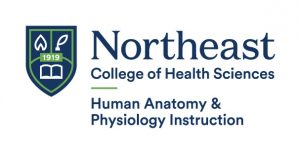
Transcripts & captions supported by
The American Association for Anatomy. 
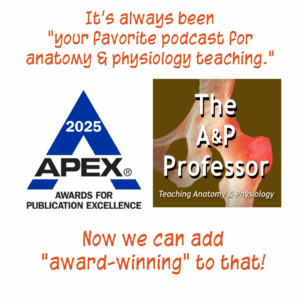
Stay Connected
The easiest way to keep up with new episodes is, um, wherever you already listen to audio!
Click here to be notified by email when new episodes become available (make sure The A&P Professor option is checked).
Call in
Record your question or share an idea and I may use it in a future podcast!
Toll-free: 1·833·LION·DEN (1·833·546·6336)
Email: podcast@theAPprofessor.org
Share

Kevin's bestselling book!
Available in paperback
Download a digital copy
Please share with your colleagues!
Kevin's bestselling book!
Available in paperback
Download a digital copy
Please share with your colleagues!
Tools & Resources
TAPP Science & Education Updates (free)
TextExpander (paste snippets)
Krisp Free Noise-Cancelling App
Snagit & Camtasia (media tools)
Rev.com ($10 off transcriptions, captions)
The A&P Professor Logo Items
(Compensation may be received)
🏅 NOTE: TAPP ed badges and certificates can be claimed until the end of 2025. After that, they remain valid, but no additional credentials can be claimed. This results from the free tier of Canvas Credentials shutting down (and lowest paid tier is far, far away from a cost-effective rate for our level of usage). For more information, visit TAPP ed at theAPprofessor.org/education

